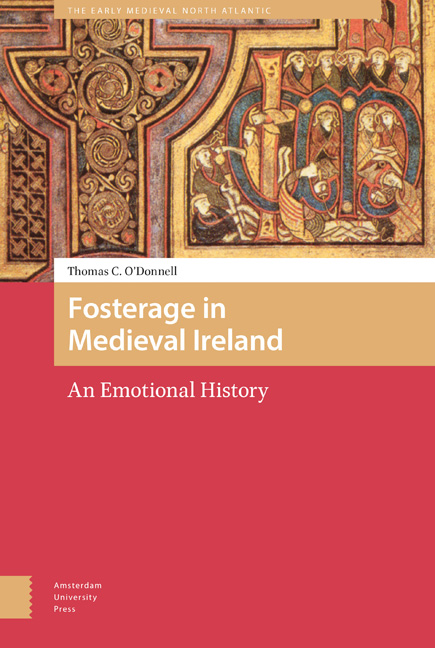Book contents
- Frontmatter
- Dedication
- Contents
- Abbreviations
- Acknowledgements
- Introduction
- 1 Cú Chulainn and Expressions of Foster Fatherhood
- 2 Who Makes a Foster Sibling?
- 3 Identity within Fosterage
- 4 Fosterage in the Medieval Irish Church
- 5 Animal Fosterage: A Bestial Parallel?
- Conclusion
- Bibliography
- About the Author
- Index
3 - Identity within Fosterage
Published online by Cambridge University Press: 25 November 2020
- Frontmatter
- Dedication
- Contents
- Abbreviations
- Acknowledgements
- Introduction
- 1 Cú Chulainn and Expressions of Foster Fatherhood
- 2 Who Makes a Foster Sibling?
- 3 Identity within Fosterage
- 4 Fosterage in the Medieval Irish Church
- 5 Animal Fosterage: A Bestial Parallel?
- Conclusion
- Bibliography
- About the Author
- Index
Summary
Abstract
Foster bonds are created within family units, but they are also expressed in other settings. This chapter examines the use of fosterage language to describe, define and create emotional relationships within monasteries and the warrior bands of the fían. Outside of the monastery the language of fosterage was used to express care responsibilities, power and affection among other corporate bodies, including the fían. When seniority was in question among supposed equals, the language of fosterage could be used to express subtle power differences. Among the fían, status was shifting so the changing vocabulary of fosterage was best placed to describe their bonds.
Keywords: monasteries, fíanna, child rearing, education, Fionn mac Cumaill, social hierarchies
The previous chapter outlined the ways that fosterage bonds could be formed, by appeal to a uniting foster parent, through active deeds of foster siblings. Every example is a combination of these models, but some rely more heavily on one or another. When the foster family was formed there was an assumption that the foster siblings would treat each other equally and that they would all defer to their foster parents. This was not always the case. The identity of characters within the foster family was open to change, the terms used to describe the members of that family shifting to better represent changes in power. The foster family was a new creation, but all its members were still beholden to their roles in society at large. The spiritual and temporal hierarchies of medieval Irish society changed the way foster families interacted.
This chapter addresses the expression of power and identity within the foster family. The bonds formed during religious education were often expressed in terms of fosterage. These bonds are seen in many saints’ lives. The hagiographical sources present, on the one hand, a community of equals, bonds of brotherhood within the monastery and the unity of the family in Christ. When the centre of attention is a saint, a preeminent individual, that equality is swift to fall by the wayside. Where shared martial education produced bonds of foster brotherhood, for the saints these horizontal ties of foster brother and foster sister are not used as much as the hierarchical language of foster parents and foster children.
- Type
- Chapter
- Information
- Fosterage in Medieval IrelandAn Emotional History, pp. 99 - 130Publisher: Amsterdam University PressPrint publication year: 2020

